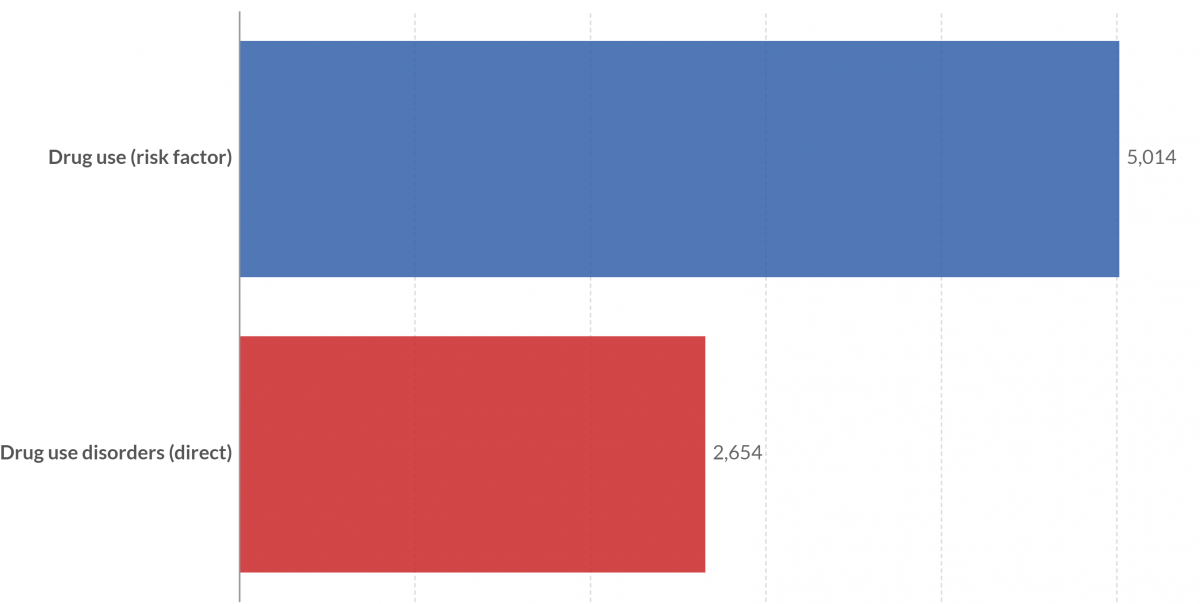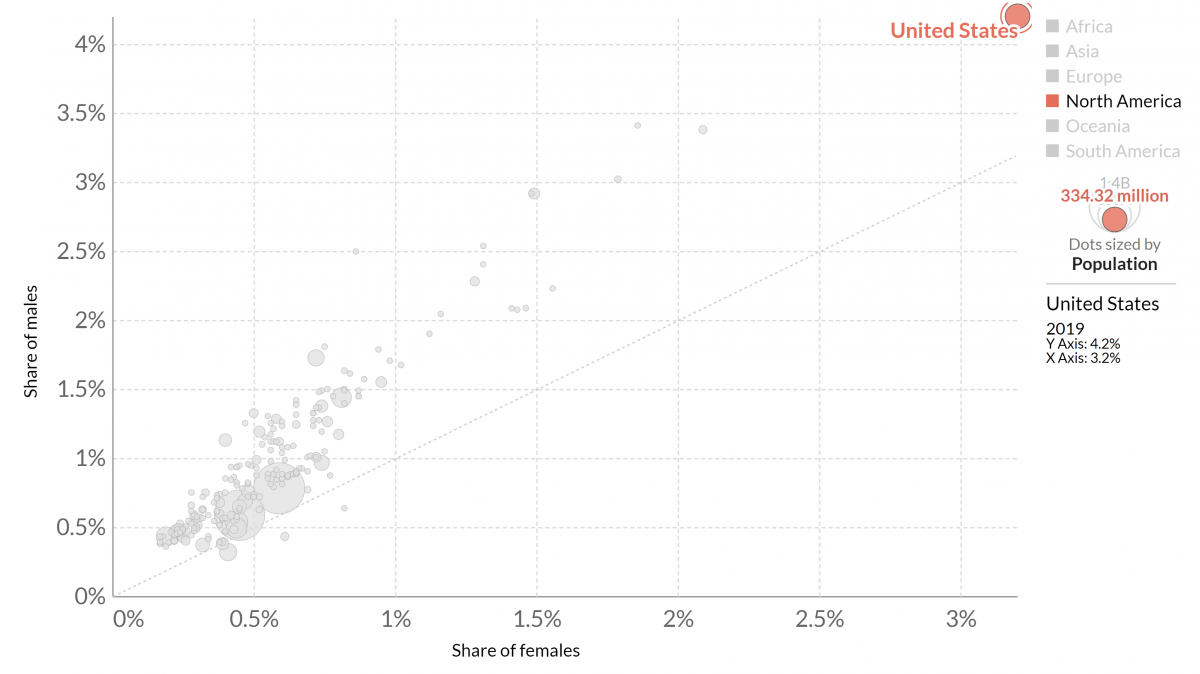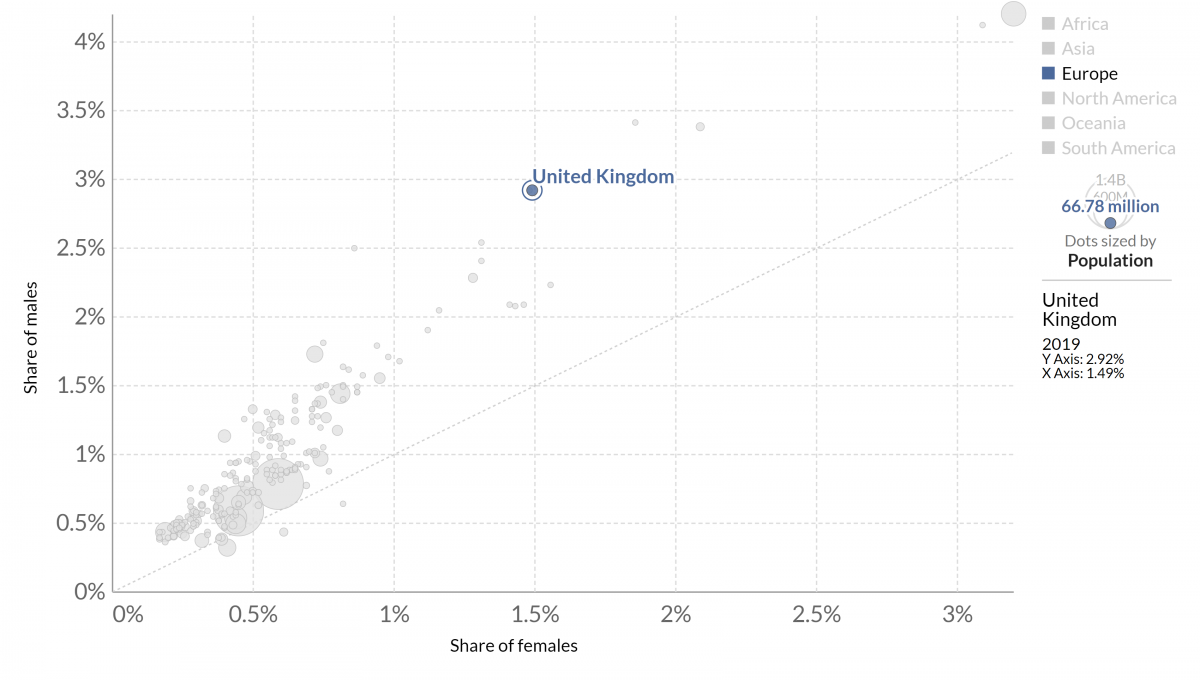Drugs that are illegal under international drug control treaties are known as illicit drugs.
Opioids, cocaine, cannabis, and amphetamines are the four main categories of illicit drugs that are often the subject of international statistics. However, a variety of other illegal substances, such as plant-based drugs and synthetic hallucinogens, are covered by international drug control treaties. The "Terminology and Information on Drugs" publication from the UNODC includes a thorough list of illicit drugs.
Illegal substance abuse or dependence can have negative effects on one's physical and mental health as well as, in many situations, other people's wellbeing. Illicit substances differ in their effects on health and wellbeing; some have far less of a negative effect than others.
People can die directly or indirectly from drug use
People can die from illicit drug use in several ways. The first is that the use of illicit drugs at any point in someone’s life can act as an indirect risk factor for premature death from disease or injury. The second is that illicit drugs can result in direct deaths from drug dependency and overdoses. The chart shows us that hundreds of thousands die indirectly or directly from illicit drug use each year.
Deaths from illicit Drugs, United States, 2019
Shown in blue is the estimated annual number of deaths attributed to drug use. Shown in red is the estimated annual number of deaths from drug use disorder. The difference between them is that they relate to indirect and direct causes of death, respectively.

Deaths from illicit Drugs, United Kingdom, 2019

| Data published by | Global Burden of Disease Collaborative Network. Global Burden of Disease Study 2019 (GBD 2019) Results. Seattle, United States: Institute for Health Metrics and Evaluation (IHME), 2021. |
Opioids were responsible for the largest number of drug overdoses
Annually, drug overdoses claim the lives of more than 100,000 people worldwide.
Opioid overdoses are to blame for the majority of these deaths. The United States has seen the largest increase in opioid-related mortality in recent years.
They depict the situation as developing across several decades, starting in the 1990s, in three phases. Due to lax prescription laws and pharmaceutical companies' aggressive marketing, there was an upsurge in the usage of prescribed opioids during the first phase. These limitations were tightened throughout the subsequent phase, and heroin consumption increased. Since 2013, the third phase has witnessed a move toward synthetic opioids, such as fentanyl. Additionally, there has been a large growth in therapy services as a result.
Drug use disorder deaths, United States, 1990 to 2019
Estimated annual number of deaths from drug use disorder, by type of drug.

Drug use disorder deaths, United Kingdom, 1990 to 2019

| Data published by | Global Burden of Disease Collaborative Network. Global Burden of Disease Study 2019 (GBD 2019) Results. Seattle, United States: Institute for Health Metrics and Evaluation (IHME), 2021. |
The US has the highest death rates from opioids and illicit drugs
Opioids are responsible for the largest number of overdose deaths globally.Death rates from illicit drugs are the highest in the United States. This is largely the result of a steep rise in opioid deaths in recent years. This chart shows death rates from opioid overdoses, measured as the number of deaths per 100,000 people in the population. This is not only the case for opioids: the US also has the highest death rate from other drug overdoses.
Opioid use disorder death rate in United States, 2019
Estimated annual number of deaths from opioid use disorders per 100,000 people.

Opioid use disorder death rate in United Kingdom, 2019

| Data published by | Seattle, United States: Institute for Health Metrics and Evaluation (IHME), 2021. |
Men are more likely to have a drug dependency
There are significant sex differences in the likelihood that someone develops an illicit drug dependency. In the chart, we see the share of men that have a dependency on any type of illicit drug (on the y-axis) versus the share of women that do (on the x-axis). The grey line shows us where the rates in men and women would be equal. Almost every country lies above the grey line. This means that drug use disorder rates are higher in men than they are in women in almost all countries in the world.
Prevalence of drug use disorders in United States, males vs females, 2019
Share of population suffering from drug use disorders, in males versus females.

Prevalence of drug use disorders in United Kingdom, males vs females, 2019

Share of population with drug use disorders, 2019
Drug dependence is defined by the International Classification of Diseases as the presence of three or more indicators of dependence for at least a month within the previous year. Drug dependency includes all illicit drugs and excludes alcohol and tobacco.

Note** : The quality and accessibility of data vary greatly from country to country. While high-quality data on illicit drug use is frequently available in wealthy nations, it is frequently scarce in developing nations. The IHME Global Burden of Disease makes an effort to close these gaps, however these projections are fraught with uncertainty. The International Classification of Diseases (ICD) of the WHO serves as the foundation for the IHME's definition of a substance use disorder. Alcohol, any illegal drugs (whether prescription or not), including opiates, cocaine, amphetamines, and cannabis are all considered substance use disorders. Smoking is excluded from them.Here, only information about the usage of illegal drugs is provided. It excludes drinking alcohol and smoking.
